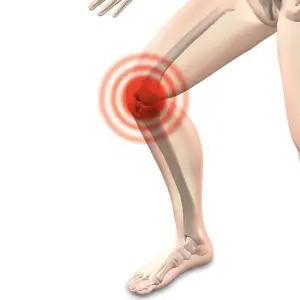Maintaining Professional Boundaries: Addressing Concerns of Massage Creep in the Health Industry

- The Impact of Inappropriate Behavior during Massages
- Recognizing the Signs of Massage Creep
- The Importance of Creating a Safe and Respectful Environment
- The Role of Professional Training and Accreditation
- How to Address and Report Instances of Massage Creep
- Promoting Awareness and Education within the Massage Industry
Massage Creep refers to the inappropriate behavior exhibited by massage therapists towards their clients. It is a serious concern in the health industry as it violates professional boundaries and compromises the well-being of individuals seeking therapeutic treatments. This issue undermines the trust and integrity of the massage profession, making it essential to address and prevent such misconduct. By understanding the nature of Massage Creep, we can work towards creating a safer and more respectful environment for all clients.
The Impact of Inappropriate Behavior during Massages
Inappropriate behavior during massages can have a significant impact on both the client and the massage therapist. For clients, it can lead to feelings of discomfort, violation, and even trauma. It can undermine their trust in the massage therapy profession and deter them from seeking future treatments.
For massage therapists, inappropriate behavior can cause emotional distress and professional harm. It may result in reputational damage, loss of clients, and even legal consequences. Moreover, it creates a hostile work environment that affects not only the therapist involved but also their colleagues.
The impact of inappropriate behavior during massages extends beyond individual experiences. It tarnishes the reputation of the entire massage industry and undermines its credibility as a legitimate health practice. This not only affects clients' trust but also hampers efforts to promote massage therapy as a valuable form of holistic healing.
It is crucial to address the issue of inappropriate behavior during massages to protect both clients and professionals alike. By creating a safe and respectful environment, we can ensure that everyone feels comfortable seeking and providing massage therapy services.
Recognizing the Signs of Massage Creep
It is essential for both clients and massage therapists to be aware of the signs that indicate inappropriate behavior during a massage session. Some common red flags include therapists who do not respect personal boundaries, make suggestive comments, or engage in unnecessary physical contact. Clients may also feel uncomfortable if the therapist insists on working on sensitive areas without proper explanation or consent. Trust your instincts and be vigilant for any behavior that makes you feel uneasy or violated. It is crucial to address these signs promptly to ensure a safe and respectful environment for all involved parties.
The Importance of Creating a Safe and Respectful Environment
Creating a safe and respectful environment is crucial in the massage industry. Clients should feel comfortable and secure during their sessions, without any fear of inappropriate behavior. By establishing clear boundaries and professional standards, massage therapists can ensure that their clients' well-being is prioritized. This includes maintaining proper draping techniques, using appropriate language, and respecting personal space. A safe environment not only protects clients from potential harm but also promotes trust and enhances the overall massage experience.
The Role of Professional Training and Accreditation
Professional training and accreditation play a crucial role in addressing the issue of massage creep in the health industry. By requiring massage therapists to undergo comprehensive training programs and obtain proper certification, we can ensure that they are equipped with the knowledge and skills necessary to provide safe and ethical massages.
These training programs cover various aspects, including anatomy, physiology, ethics, and professional boundaries. They educate therapists on appropriate techniques, communication skills, and how to maintain a respectful environment for clients. Additionally, accreditation bodies set standards for education and practice, ensuring that therapists adhere to a code of conduct.
By investing in professional training and accreditation, we can weed out individuals who may engage in inappropriate behavior during massages. It helps create a more trustworthy and reliable industry where clients can feel confident about their safety and well-being.
Moreover, ongoing professional development is essential to keep therapists updated on best practices and emerging issues within the field. Continuing education courses can address topics such as consent, boundaries, and recognizing signs of misconduct. This continuous learning ensures that therapists stay informed about potential risks and are better equipped to prevent instances of massage creep.
In conclusion, professional training and accreditation are vital components in combating massage creep. By establishing rigorous standards for education and practice within the industry, we can ensure that massage therapists possess the necessary skills and knowledge to provide safe and respectful experiences for their clients.
How to Address and Report Instances of Massage Creep
When faced with instances of massage creep, it is crucial to take immediate action to address the issue. Here are some steps you can take:
1. Trust your instincts: If something feels off or uncomfortable during a massage session, trust your gut feelings. Your safety and well-being should always be a priority.
2. Communicate clearly: Politely but firmly communicate your boundaries and discomfort to the massage therapist. They may not be aware of their inappropriate behavior and addressing it directly can help rectify the situation.
3. Request a different therapist: If you feel uncomfortable continuing with the current therapist, ask for another professional to take over the session. Most reputable establishments will have procedures in place to accommodate such requests.
4. Report the incident: It is essential to report instances of massage creep to the management or owner of the establishment where it occurred. Provide them with detailed information about what happened and any evidence you may have, such as witness statements or photographs.
5. Contact professional associations: If the establishment fails to address your concerns adequately, reach out to relevant professional associations in the massage industry. They can provide guidance on how to proceed further and may even take disciplinary action against the therapist involved.
Remember, reporting instances of massage creep not only helps protect yourself but also contributes to creating a safer environment for others seeking massages in the future.
Promoting Awareness and Education within the Massage Industry
Promoting awareness and education within the massage industry is crucial in addressing the issue of massage creep. It is important for massage therapists to stay updated on professional ethics and boundaries through continuous education and training programs. Additionally, industry organizations should take an active role in promoting awareness by providing resources, workshops, and seminars on appropriate conduct during massages. By fostering a culture of respect and professionalism, we can work towards creating a safer and more respectful massage experience for both clients and therapists alike.
In conclusion, it is crucial for the massage industry to prioritize creating a safer and more respectful environment for both clients and therapists. By recognizing the signs of massage creep and addressing instances promptly, we can ensure that inappropriate behavior is not tolerated. Professional training and accreditation play a vital role in equipping therapists with the knowledge and skills to maintain professional boundaries. Additionally, promoting awareness and education within the industry will help raise standards and foster a culture of respect. Let us work together to make every massage experience a positive one, where clients feel safe and therapists can practice their craft with integrity.
Published: 18. 12. 2023
Category: Health



